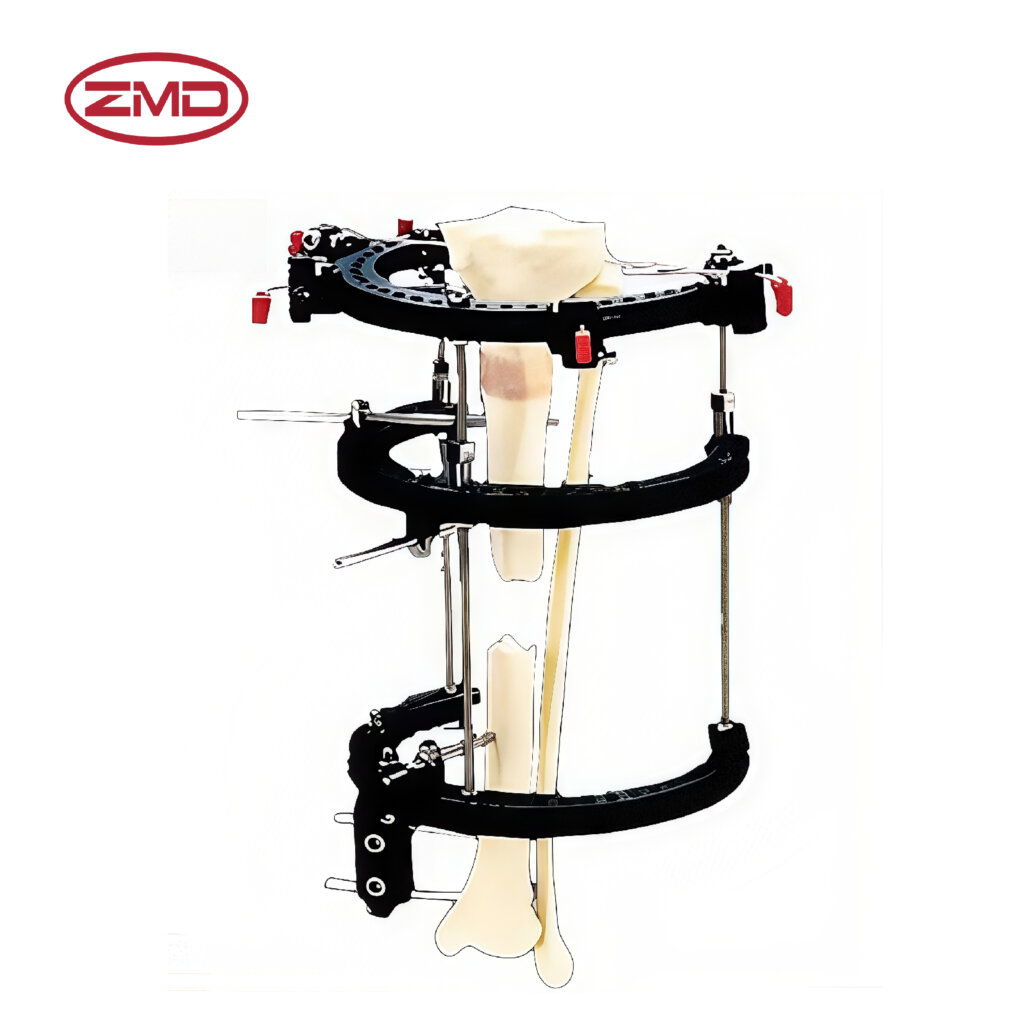
- Home
- About Us
- Products
- Trauma Internal Fixation System
- Spinal Internal Fixation System
- External Fixation
- Artificial Implants System
- Sports Medicine
- Power tools
- VSD System
- Instruments
- Medical supplies
- Blog
- Personnel Profile
- Contact Us
Phone line
| CODE | PRODUCTION | DESCRIPTION | MATERIAL |
| ZG001 | Pelvic Short Fixator with T-Clamp | Whole set | Aluminum |
A:
The Pelvic Short Fixator with T - Clamp is typically constructed from medical - grade materials. These materials are carefully selected to ensure both durability and biocompatibility. Durability is crucial because the fixator needs to withstand the forces exerted during the healing process and normal body movements. Biocompatibility means that the body's immune system is less likely to react negatively to the fixator, reducing the risk of complications like infections or tissue rejection. Commonly used materials include high - quality stainless steel or titanium alloys, which possess excellent mechanical properties and are well - tolerated by the body
A:
It provides strong and stable fixation for pelvic injuries. The T - Clamp design is engineered to firmly grip the pelvic bones, preventing any significant movement. In the case of pelvic fractures, it holds the bone fragments in the correct position, minimizing the risk of misalignment during the healing process. This stability is vital for proper bone healing and helps reduce the likelihood of further damage to the pelvis or surrounding tissues. It creates an ideal environment for the body's natural healing mechanisms to function optimally.
A:
The fixator is designed to be user - friendly for medical professionals during surgery. Its design and components are structured in a way that simplifies the application process. However, like any medical device, its application does require a certain level of skill and knowledge. The ease of use also depends on the experience and training of the medical staff using it.
A:
Some models may allow for certain adjustments as needed. These adjustments can be useful during the initial application to ensure a proper fit around the pelvis or during the healing process if circumstances change. For example, the position or tightness of the T - Clamp might be adjustable in some cases. However, any adjustments would be carefully carried out by medical professionals to avoid disrupting the healing process or causing harm to the patient.
A:
It may be available in various sizes to fit different patients. Since the pelvis varies in size and shape among individuals, having different size options is important. Medical staff can assess the patient's specific pelvic anatomy through pre - operative imaging, such as X - rays or CT scans, and then select the most appropriate size of the fixator. This ensures that it provides effective support and fixation for each individual patient.
A:
The duration it needs to stay in place depends on the severity of the injury and the progress of the healing process. In less severe cases, it may be removed after a few weeks, while in more complex or severe pelvic fractures, it could remain in place for several months. The medical team regularly monitors the patient's condition through physical examinations and imaging studies to determine the right time for removal
A:
Removal is typically done by a medical professional when appropriate. While the removal process is usually less complex than the initial implantation, it still requires surgical expertise. The medical team carefully detaches the fixator and the T - Clamp from the pelvic bones, taking precautions to avoid any damage to the newly healed bone or surrounding tissues. After removal, the patient may need to follow a rehabilitation program to regain full function of the pelvis.
A:
It is used in pelvic fracture fixation surgeries. Additionally, it can also be valuable in other procedures related to pelvic injuries where stable fixation is required, such as surgeries for pelvic instability caused by ligament damage or in cases of correcting pelvic deformities.
A:
The fixator is designed to minimize discomfort while providing the necessary fixation. The T - Clamp is configured to apply the appropriate amount of pressure on the pelvic bones without causing excessive pressure or irritation to the bones or surrounding tissues. However, having a foreign object in the body can still cause some level of discomfort for the patient. The medical team usually employs pain management strategies and provides patient education to help manage any discomfort experienced.
A:
Some training may be beneficial for the proper application of the Pelvic Short Fixator with T - Clamp. Medical professionals need to understand its features, such as how the T - Clamp functions and the correct positioning around the pelvis. Training programs typically cover the surgical techniques for implantation, adjustment, and removal of the fixator, as well as knowledge about the biomechanics of pelvic fixation to ensure safe and effective treatment.
Oh yeah! I have to mention their payment options and discount offers, which are awesome! Those payment methods are as flexible as moving water and can be chosen freely according to our cash flow situation. And the frequent discounts, like a timely rain, have been moisturizing our financial statements time and again, and have had a rocket-like positive impact on our profits! With ZMD, I feel relaxed and at ease when it comes to purchasing!
Send us a message if you have any questions or request a quote. Our experts will give you a reply within 24 hours and help you select the right valve you want.
Book Now
If you are looking for professional orthopedic medical product solutions, don’t hesitate to contact us now!

We are an integrated manufacturer specializing in orthopedic medical industry, providing high quality and reliable orthopedic medical products to customers worldwide.
Copyright © 2024 ASK Project